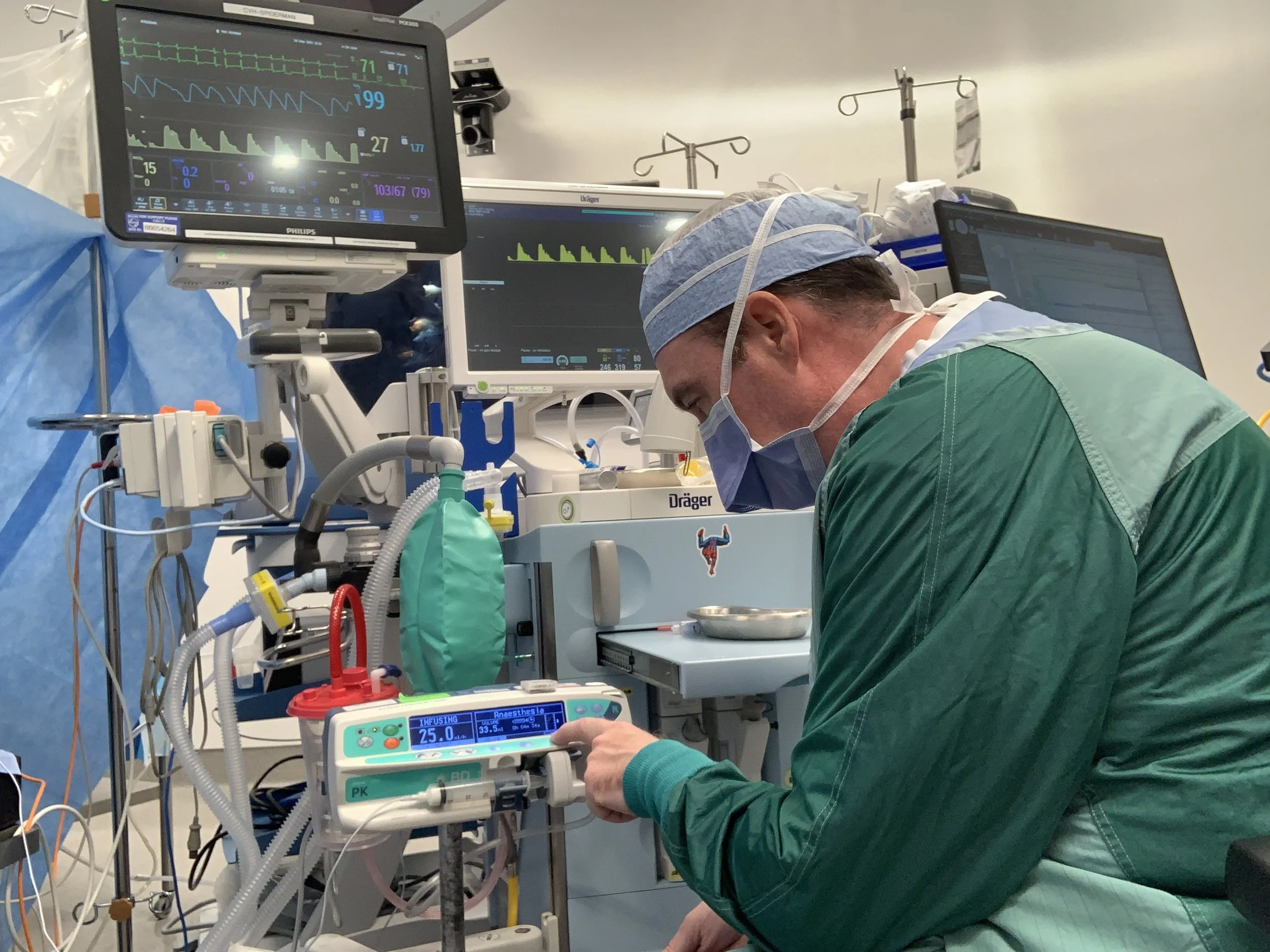Her strong belief in preventing health care from falling through the cracks would lead her to take on an even bigger role in the fall of 2019: Chief of Anesthesia at Bluewater Health, which covers a regional population of around 150,000 in Lambton County. (Bluewater Health also oversees Charlotte Eleanor Englehart Hospital in Petrolia, but this facility does not offer anesthesia services.)
Over the next five-and-a-half years, Dr. Bertram would guide Bluewater’s anesthesia department through challenge after challenge: Massive technological upgrades, including to the hospital’s electronic records management system; treating a population that is increasingly older and more complex; and dealing with the COVID-19 pandemic and an extensive ransomware cyberattack, both of which caused thousands of Bluewater appointments and procedures to be delayed. The last few years also saw an increase in equipment backorders and even the occasional shortage of essential medications.
But despite all that, “Recruitment was probably one of the most, if not THE most, frustrating part of being chief,” recalls Dr. Bertram, who stepped away from the chief’s role in March 2025. That recruitment sticks out from the other challenges Dr. Bertram faced highlights just how dire anesthesia staffing has become in some parts of Ontario.
“I hate to use the word ‘panic’ but people should be panicking about this,” she says. “We are the gatekeepers; without anesthesia you don’t get your surgical services,” a situation that Dr. Bertram unfortunately encountered several times as chief. These shortages threaten not just access to surgical care but also core principles of patient safety, particularly in aging, medically complex populations.
She explains that while Bluewater’s anesthesiologists are excellent, dedicated doctors who often work extra shifts to ensure patients get the care they need, “We just don’t always have the people to provide all the services that we could be providing.” Dr. Bertram’s experience highlights the pressing need for sustainable, long-term solutions, such as expanded training capacity, improved exposure to community practice during residency, and stronger recruitment incentives, to ensure anesthesiology services remain safe, timely, accessible, and resilient across Ontario.
While Dr. Bertram describes Bluewater as a community hospital, she’s quick to add that it routinely does major surgeries, from joint replacements to bowel resections to stabilizing trauma victims before transferring them to nearby London, ON. It has eight operating rooms, a dedicated caesarian section room, and three endoscopy suites.
As chief of anesthesia at Bluewater, Dr. Bertram was responsible for ensuring the hospital had appropriate anesthesia coverage and what it needed to safely and efficiently deliver care. She also addressed and resolved complaints, and dealt with various day-to-day tasks, from creating schedules to checking in with staff on how they were doing. She did all this while still practicing anesthesia full-time.
Dr. Bertram explains that ideally, Bluewater’s anesthesia department would have the equivalent of eight full-time anesthesiologists, though she adds, “Nine would be even better.” However, since the retirement of her predecessor and another physician in 2019, the department has often had fewer than eight full-time members.


















